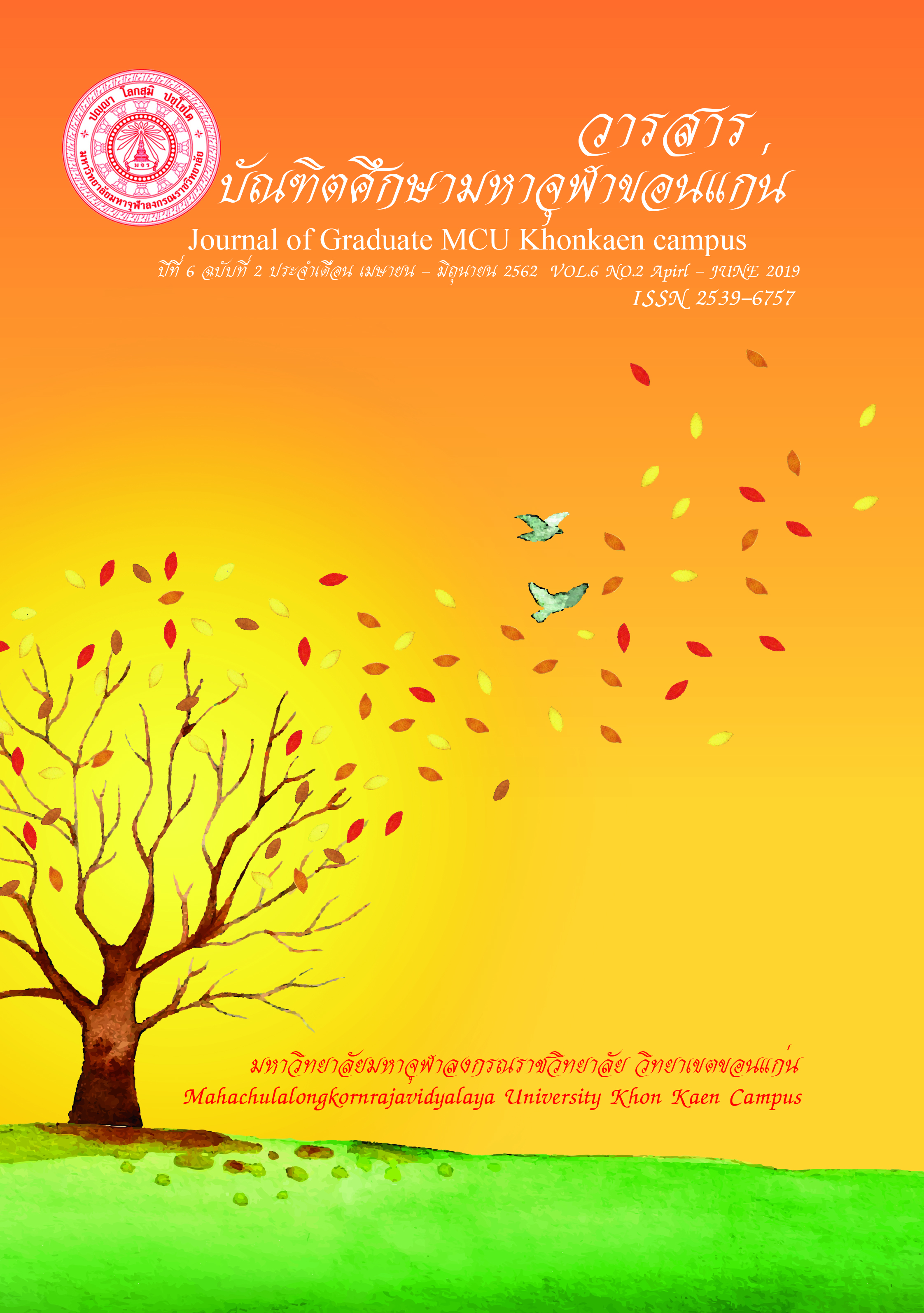Women as Mother in Accordance with the Buddhist Doctrine in the Current Thai Society
Main Article Content
Abstract
The purposes of this dissertation are: 1) to study a woman as a mother in the Buddhist doctrine;2) to study a woman as a mother in the current society; 3) to present a model of woman as a mother in accordance with the Buddhist doctrine in the current Thai society. This dissertation is qualitative research. The main research document is the Buddhist doctrine, and the secondary research document is Dhammapada Commentary. Moreover, the documents related to Buddhism are included as the data source. The related research and the field data are from in-depth interviews, which are collected, edited and presented into the results of descriptive and analytical research.
It is found that the status of mother in the Buddhist doctrine is a mother who is pregnant and gives birth, and they are called “Mata”. Manda and Pida, who support their children, are the direction in front. They help their children in five ways, which are 1) keeping them back from evil 2) training them in virtue 3) teaching them arts and sciences 4) arranging for marriage with a suitable husband or wife and 5) handing over their inheritance to their children in due time. Therefore, their roles are divided into two ways. The first way is the dhamma role. They forbid their children from doing bad things in body, speech and mind, and cultivate good moral traits to their children. The second way is the secular role. They teach their children arts and sciences, arrange a suitable wife or husband for their children and hand over the inheritance at the proper time. Consequently, the children use their own knowledge to have right livelihood until the end of their life.
A woman as a mother in the current Thai society refers to woman, feminine and female sex. They have an important role to guide their family, society and country to the development with happiness and without any problems. The roles of woman in Thai society consist of 1) maternity 2) housewife 3) the traits of Thai noble lady and 4) a grown and civilized lady. In addition, the roles of mother in Thai society include 1) a moral trainer to a child 2) a problem solver 3) a breadwinner and 4) a good example in society. On the other hand, some Thai women as mothers in the current Thai society face many problems, which are 1) the problems of emotional stress 2) childbearing without medical care 3) unplanned pregnancy and 4) poverty.
A model of woman as a mother in accordance with the Buddhist doctrine is the best model as mother to teach and train the moral concepts and values to all mothers around the world. The roles of mother are responsible for teaching many good things to all citizens around the world. They should have an important role to develop and reform the cultivation, which are suitable for the current state of society.
According to the interviews of outstanding mothers in 2017, there are 20 outstanding mothers, who live in non-municipal and municipal area in KhonKaen Municipality. Theyteach and train their children by the principles of Buddhismincluding 1) the principles of six directions, 2) four sublime states of mind and 3) bases of social solidarity; bases of sympathy; acts of doing favors; principles of service; virtues making for group integration and leadership. Moreover, it is found that some mothers train their children by the five precepts. This is the good example and model. Some of them must earn a living, but they have never abandoned their duty. Each child in a sample family is successful in life. They graduate and get a good job as their family expects. People who are good children and make their mother happy can develop the society. Conclusively, the roles and duty of mother are one of the important parts to solve the problems in the current Thai society.
Article Details
References
of the family success in Buddhism: A case study of the air force
house-wives. Graduate School: Mahachulalongkornrajavidyalaya
University.
Tassanee Puwarat. (1986). The study of attitude and role of men in family and
their impacts on women development. A Thesis in Master of Social
Work. Bangkok: Thammasat University Press.
Pranee Surasit. (1984). The doctrines to Thai women in Thai literature before
the period of Western influences. A Thesis in Master of Education.
Bangkok: Srinakharinwirot University.
Pratammagohsaajaan, (P.A. Payutto). 2010. A Mother’s Love Ban.
Bangkok:Thammasapa Press.
PhraThammapidok (P.A. Payutto). (2000). Perfect Life. (5
th ed.). Bangkok:
Sahadhammik.
PhraBrahmagunabhorn (P.A. Payutto). 2007. A Value People. Bangkok:
Pimsuay Company Limited.
Pramahasuchart Nathokkaro (Buakkuntod). (2002). An Analytical Study of the
Puttasangaha (Cherishing of Children) and Darasangaha
(Cherishing of Wife) in Theravada Buddhism. A Thesis in Master of
Buddhist Studies. Graduate School: Chulalongkorn University.
The National Council of Women of Thailand Under The Royal Patronage of
Her Majesty The Queen. (2012). The 10th anniversary of Thai
Women’s Day. Bangkok: Thai Wattanapanit.
Sowit Bumrungpak and Homhuan Buarabha. (2017). Atta (Self) in Buddhist
Saying and Anatta Philosophy. Humanities and Social Sciences
Journal, 34(1), 270-290.

